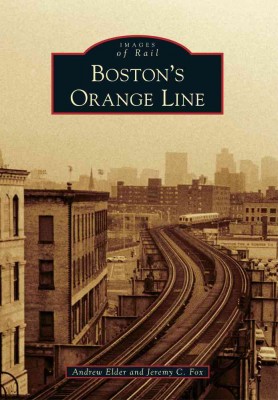| Boston's Orange Line Contributor(s): Elder, Andrew (Author), Fox, Jeremy C. (Author) |
|
 |
ISBN: 1467120472 ISBN-13: 9781467120470 Publisher: Arcadia Publishing (SC) OUR PRICE: $22.49 Product Type: Paperback - Other Formats Published: October 2013 |
| Additional Information |
| BISAC Categories: - Transportation | Railroads - History - History | United States - State & Local - New England (ct, Ma, Me, Nh, Ri, Vt) - Transportation | Railroads - Pictorial |
| Dewey: 625.100 |
| LCCN: 2013936165 |
| Series: Images of Rail |
| Physical Information: 0.4" H x 6.5" W x 9.1" (0.70 lbs) 128 pages |
| Themes: - Locality - Boston-Worcester, Mass. - Geographic Orientation - Massachusetts - Cultural Region - New England |
| Descriptions, Reviews, Etc. |
| Publisher Description: The story of the Orange Line is the story of Boston: always in flux but trailed by its long history. Since 1901, this rail line s configuration has evolved in response to changes in the city, society, and technology. Hazardous sections have been eliminated, ownership has transitioned from private to public, and the line has been rerouted to serve growing suburbs and to use land cleared for the failed Inner Belt. Both its northern terminus, which shifted from Everett to Malden, and the southern route, realigned from Washington Street to the Southwest Corridor, have seen dramatic transformations that have in turn changed riders lives. Today, the line s 10 miles of track curve through many Greater Boston communities, serving thousands along the way." |
Contributor Bio(s): Elder, Andrew: - Jeremy C. Fox, a correspondent for the Boston Globe, has covered local news and arts since 2005. Andrew Elder is an archivist at the University of Massachusetts Boston and a board member at The History Project, a community-based archive that preserves New England s gay, lesbian, bisexual, and transgender history. Together, they have documented the history of the Orange Line using images from the Boston Public Library; the Library of Congress; local photographers, both amateur and professional; and other sources. |